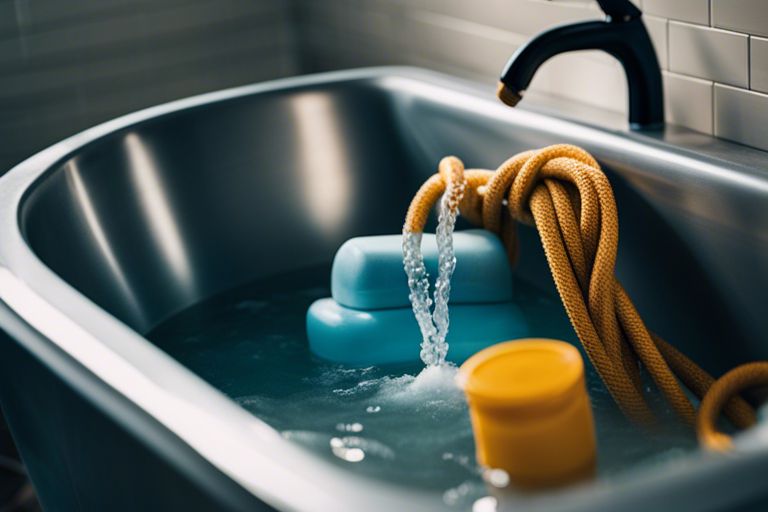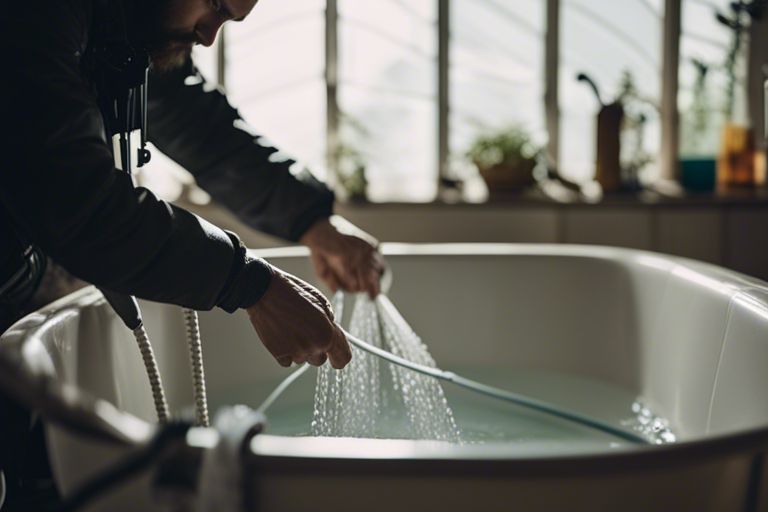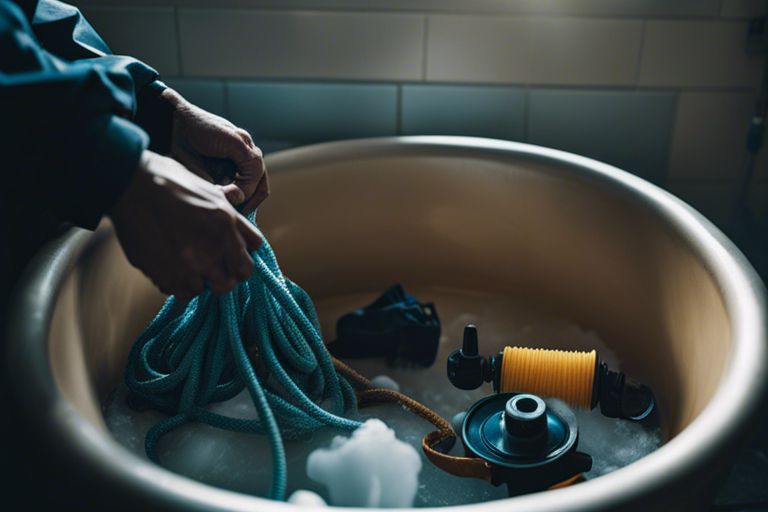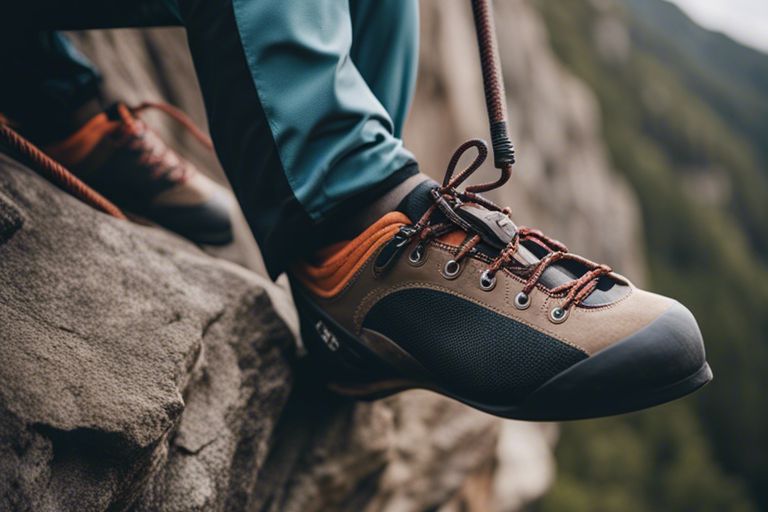There’s nothing quite like the feeling of a clean, well-maintained climbing rope in your hands. In this guide, you will learn the step-by-step process of properly washing your climbing rope to ensure its longevity and safety. Follow these simple instructions to keep your rope in top condition for all your climbing adventures.
Key Takeaways:
- Use a gentle detergent: Avoid harsh chemicals and opt for a mild detergent to clean a climbing rope.
- Avoid machines: Hand washing is the best method for cleaning climbing ropes to avoid damage from machines.
- Air dry: Allow the climbing rope to air dry out of direct sunlight to maintain its integrity and prolong its lifespan.

Understanding the Importance of Washing Your Climbing Rope
Your climbing rope is a crucial piece of equipment that ensures your safety while climbing. Regularly washing your rope is vital for maintaining its durability and longevity. Dirt, dust, and grime can cause abrasions and weaken the fibers in the rope over time, increasing the risk of breakage. By keeping your rope clean, you can significantly extend its lifespan and ensure it continues to perform at its best.
Factors Affecting Rope Durability
- Frequency of use
- Environmental conditions (dirt, sand, moisture)
- Storage practices
Any of these factors can contribute to the wear and tear of your climbing rope, making regular washing a necessary part of maintenance to keep it in optimal condition.
Consequences of Not Washing Your Rope
On top of compromising the safety of your climbing adventures, neglecting to wash your rope can lead to a decrease in its tensile strength and overall performance. Dirt and grime build-up can cause the rope to become stiff and less flexible, making it harder to handle during climbs. This can affect your grip, control, and overall climbing experience.

Pre-Washing Preparation
Inspecting Your Rope for Damage
If you’re getting ready to wash your climbing rope, the first step is to inspect it for any signs of damage. This is crucial for your safety, as a damaged rope can be dangerous to use. Look for any cuts, abrasions, or weak spots along the length of the rope. If you notice any of these issues, it’s best to retire the rope and get a new one to ensure your safety while climbing.
Choosing the Right Cleaning Solution
Rope cleaning solutions can vary, so it’s important to choose the right one for your specific climbing rope. Some ropes may require a gentle detergent, while others may do better with a specialized rope cleaner. Always check the manufacturer’s instructions for your rope to see if they have any specific recommendations for cleaning solutions.
Rope cleaning solutions are designed to be gentle on your climbing rope while effectively removing dirt and grime. Using the wrong cleaning solution can damage the fibers of the rope, compromising its strength and safety. It’s worth investing in a quality rope cleaner to ensure your rope stays in top condition for your climbing adventures.
Gathering Essential Equipment
If you’re preparing to wash your climbing rope, you’ll need to gather some imperative equipment to make the process easier. This includes a rope bag or tarp to protect your rope during washing, a bucket or tub large enough to hold the rope, a soft-bristled brush for scrubbing, and a drying rack or hanger to air out the rope post-wash.
Choosing the right equipment is crucial to ensure that your climbing rope is cleaned thoroughly and safely. A soft-bristled brush is gentle enough to scrub away dirt without damaging the fibers of the rope, while a drying rack or hanger allows for proper airflow to dry the rope evenly. Having the right equipment on hand will make the washing process much smoother and more effective.
Another important piece of equipment to have on hand is a mild detergent or specialized rope cleaner. These cleaning solutions are designed to effectively clean your climbing rope without compromising its strength or integrity. Using the right cleaning solution will help prolong the life of your rope and keep it in optimal condition for your next climb.
Washing Your Climbing Rope
Hand Washing vs. Machine Washing
Unlike regular laundry, washing your climbing rope requires a bit more care and attention. In the matter of cleaning your rope, you have two primary options: hand washing or machine washing.
Tips for Effective Rope Cleaning
To effectively clean your climbing rope, you’ll want to consider a few key tips. First, always use lukewarm water with a mild detergent specifically designed for ropes. Avoid harsh chemicals that can weaken the rope fibers.
- Thoroughly soak the rope in the water and detergent mixture.
- Gently scrub the rope with a soft brush or cloth to remove dirt and grime.
Any spots that are particularly dirty can be spot treated with a diluted cleaner, but make sure to rinse thoroughly to remove any residue.
Avoiding Common Washing Mistakes
Washing your climbing rope improperly can lead to damage and a shorter lifespan. One common mistake to avoid is using a top-loading washing machine with an agitator, as this can cause the rope to tangle and twist, leading to potential damage.
- Another mistake to avoid is using high heat or harsh chemicals, as these can weaken the rope fibers and compromise its safety.
Ensuring that you follow proper washing techniques will help keep your climbing rope in top condition and ready for your next adventure.
Rinsing and Drying Your Rope
Importance of Thorough Rinsing
To ensure the longevity and safety of your climbing rope, it is crucial to thoroughly rinse it after washing. Residual soap or dirt left on the rope can cause damage over time, weakening the fibers and reducing its strength. To properly rinse your rope, fill a bathtub or large container with lukewarm water and submerge the rope completely. Gently agitate the water to help release any remaining soap or grime from the fibers.
After rinsing, carefully inspect the rope to make sure there are no visible signs of contaminants. If needed, you can repeat the rinsing process until the water runs clear and the rope looks clean. Once you are satisfied with the rinsing, it’s time to move on to drying your climbing rope.
Drying Techniques for Preventing Water Spots
You can hang the rope in a shaded area away from direct sunlight to dry. However, if you need to dry it indoors, you can lay it out flat on a clean tarp or towel to air dry. Avoid exposing the rope to high heat sources like radiators or heaters, as this can damage the fibers. To prevent water spots from forming on the rope, it’s a good idea to periodically rotate its position while drying. This will ensure even airflow around the entire rope, helping it dry more quickly and evenly.
For instance, you can hang the middle part of the rope over a sturdy clothesline and rotate it every few hours. Alternatively, if you are drying the rope on a tarp, gently flip it over every so often to allow both sides to dry evenly. By taking these extra steps, you can help keep your climbing rope in top condition and ready for your next adventure.
How to Store Your Clean Rope
If you are not planning to use your clean climbing rope immediately, it’s important to store it properly to maintain its integrity. Avoid storing the rope in direct sunlight or damp areas, as prolonged exposure can weaken the fibers and cause damage. Instead, find a cool, dry place to store your rope where it won’t be subject to extreme temperatures or humidity.
Special Considerations for Different Rope Types
Washing Nylon Ropes
For washing nylon ropes, you need to be cautious as they are susceptible to damage from certain chemicals and high temperatures. Stick to using mild soap and lukewarm water when cleaning your nylon climbing rope. Avoid using harsh detergents or hot water as they can weaken the fibers and reduce the lifespan of your rope.
This table summarizes the special considerations for washing nylon ropes:
| Avoid harsh detergents | Use mild soap |
| Avoid hot water | Use lukewarm water |
| Do not use bleach | Gently agitate the rope |
| Air dry the rope | Avoid direct sunlight |
| Inspect for damages after washing | Store properly after drying |
This will help maintain the strength and integrity of your nylon climbing rope.
Washing Polyester Ropes
Special care needs to be taken when washing polyester ropes. Polyester is more resistant to chemicals and high temperatures compared to nylon, but it can still be affected by harsh cleaners. When washing your polyester climbing rope, use a mild detergent and cool to lukewarm water.
After washing a polyester rope, ensure that you rinse it thoroughly to remove any soap residue. This will prevent any potential damage to the fibers and maintain the rope’s durability over time.
For washing hybrid ropes, you need to be aware of the combination of materials used in these ropes. Hybrid ropes often consist of a mix of nylon and polyester fibers, which require a delicate balance in cleaning. When washing a hybrid rope, follow similar guidelines to washing nylon ropes by using mild soap and lukewarm water, while also considering the resilience of polyester fibers.
Special care should be taken to avoid any damage to the different types of fibers in a hybrid rope. After washing, thoroughly inspect the rope for any signs of wear or weak spots to ensure it remains safe for your next climb.
Troubleshooting Common Issues
Removing Stubborn Stains
While washing your climbing rope, you may encounter stubborn stains that are challenging to remove. In such cases, it’s necessary to spot treat these areas before washing the entire rope. You can use a mild detergent or a specialized rope cleaner and gently scrub the stain with a soft-bristled brush. Make sure to rinse the area thoroughly to remove any residue before air-drying the rope.
Dealing with Rope Tangles
Removing tangled knots from your climbing rope can be frustrating, but it’s important to tackle them carefully to prevent damaging the rope fibers. Start by identifying the knot and gently working it apart by loosening each loop. Avoid pulling or yanking on the rope, as this can tighten the knot and make it more difficult to untangle. If you’re having trouble, consider seeking help from experienced climbers who may have techniques to simplify the process.
Dealing with rope tangles may require patience and a systematic approach. Take your time to untangle the rope, ensuring that each section is straight and free of knots before storing it properly to prevent tangling in the future.
Fixing Rope Damage
Stains that are left untreated or ropes that are used frequently can lead to wear and tear. Rope damage such as fraying, cuts, or abrasions should be addressed promptly to prevent compromising the strength and safety of the rope. Inspect your climbing rope regularly for any signs of damage, and if you notice any issues, consider consulting a professional at your local climbing shop for guidance on how to repair or replace the damaged sections.
Stains that are left untreated or ropes that are subject to harsh conditions may develop weak spots or damage that could compromise their integrity. It’s crucial to address any signs of wear and tear to ensure the safety of your climbing equipment.
Stubborn stains or extensive rope damage may require professional cleaning or repair services to ensure the longevity and safety of your climbing rope.
To wrap up
Following this guide on how to wash a climbing rope will help you maintain the longevity and safety of your gear. Regularly cleaning your rope ensures it stays strong and reliable for your climbing adventures. Remember to always use a mild soap, avoid harsh chemicals, and properly dry your rope to prevent any damage.
Q: Why is it important to wash a climbing rope?
A: It’s important to wash a climbing rope to remove dirt, grime, and other contaminants that can weaken the rope over time. Regularly cleaning your rope can help maintain its strength and durability, ensuring your safety while climbing.
Q: How often should I wash my climbing rope?
A: It is recommended to wash your climbing rope at least once a year, or more frequently if you climb in dusty or dirty environments. If your rope appears visibly dirty or has come into contact with chemicals or harsh substances, it’s best to clean it immediately.
Q: What is the best way to wash a climbing rope?
A: The best way to wash a climbing rope is to fill a bathtub or large container with lukewarm water and a mild soap specifically designed for rope cleaning. Gently agitate the rope in the water, avoiding any twisting or knotting. Rinse the rope thoroughly with clean water and allow it to air dry away from direct sunlight and heat sources.




